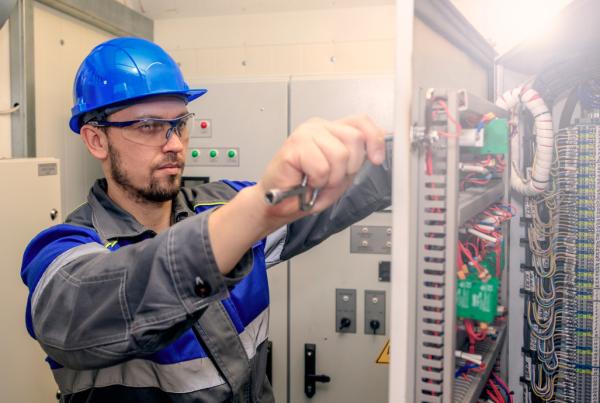The New Class of Nuclear Reactors: A Solution to the Coming Power Crisis
As the world grapples with the dual challenges of climate change and increasing energy demands, the limitations of current renewable energy sources like solar and wind are becoming more evident. While these sources play a crucial role in our energy transition, they alone cannot meet the growing power requirements of the coming decades. Enter the new class of nuclear reactors, which promise to be a game-changer in addressing the impending power crisis.
The Limitations of Solar and Wind Energy
Solar and wind energy have made significant strides in recent years, with falling costs and increasing efficiency making them viable options for power generation. However, several inherent limitations prevent them from being the sole solution to our future energy needs:
- Intermittency: Both solar and wind energy are intermittent sources of power. Solar power generation is dependent on sunlight, which is not available at night or during cloudy days. Similarly, wind power relies on wind speeds, which can be highly variable. This intermittency necessitates the use of backup power sources or energy storage systems, which add to the complexity and cost.
- Energy Storage Challenges: While battery technology is advancing, current energy storage solutions are not yet capable of storing large amounts of power for extended periods. This makes it difficult to ensure a steady supply of electricity during periods when solar and wind generation are low.
- Land and Resource Use: Solar and wind farms require significant amounts of land and resources. Large-scale deployment can lead to land use conflicts and environmental concerns. Additionally, the materials needed for solar panels and wind turbines, such as rare earth metals, have their own environmental and geopolitical challenges.
- Grid Stability: Integrating high levels of intermittent renewable energy into the grid can pose challenges for grid stability and reliability. Managing the fluctuations in power supply requires sophisticated grid management and additional infrastructure.
The Promise of the New Class of Nuclear Reactors
In contrast to the limitations of solar and wind energy, the new class of nuclear reactors offers several advantages that make them a promising solution for the coming power crisis. These advanced reactors include Small Modular Reactors (SMRs), Generation IV reactors, and Thorium reactors, each bringing unique benefits to the table.
- Continuous Power Generation: One of the most significant advantages of nuclear power is its ability to provide continuous, base-load power. Unlike solar and wind, nuclear reactors can operate 24/7, providing a stable and reliable source of electricity. This continuous operation is crucial for meeting the constant power demands of modern society.
- Higher Efficiency and Safety: The new class of nuclear reactors is designed to be more efficient and safer than traditional reactors. For example, SMRs are smaller and modular, allowing for more flexible deployment and enhanced safety features. Generation IV reactors incorporate advanced technologies that improve fuel efficiency and reduce waste. Thorium reactors, using thorium as a fuel, offer the potential for safer and more abundant nuclear energy.
- Reduced Waste and Environmental Impact: Advanced nuclear reactors are designed to minimize waste and environmental impact. Some Generation IV reactors can recycle spent fuel, reducing the overall volume of nuclear waste. Thorium reactors produce less long-lived radioactive waste compared to traditional uranium reactors. Additionally, the land footprint of nuclear power plants is significantly smaller than that of solar and wind farms, reducing land use conflicts.
- Scalability and Deployment Flexibility: SMRs, in particular, offer scalability and deployment flexibility. Their smaller size and modular design allow for easier construction and deployment in a variety of locations, including remote or off-grid areas. This flexibility can help meet localized power needs and support the overall stability of the power grid.
- Economic Competitiveness: While the upfront costs of building nuclear power plants can be high, the long-term operational costs are relatively low. With advancements in technology and economies of scale, the new class of nuclear reactors has the potential to be economically competitive with other forms of power generation. The long lifespan of nuclear reactors also contributes to their economic viability.
Addressing the Power Crisis
The global demand for electricity is expected to continue rising in the coming decades, driven by population growth, urbanization, and the electrification of various sectors such as transportation and industry. Meeting this demand while simultaneously reducing carbon emissions is a formidable challenge.
Nuclear power, with its ability to provide large-scale, continuous, and low-carbon electricity, is uniquely positioned to address this challenge. The new class of nuclear reactors can complement renewable energy sources by providing the stable base-load power necessary to balance the intermittency of solar and wind. This combination of nuclear and renewable energy can create a more resilient and reliable energy system.
Moreover, the deployment of advanced nuclear reactors can contribute to energy security by reducing dependence on fossil fuels and diversifying the energy mix. Countries with limited access to renewable resources or fossil fuels can benefit from the stable and abundant energy provided by nuclear power.
Conclusion
While solar and wind energy are essential components of our energy transition, they alone cannot meet the growing power requirements of the coming decades. The new class of nuclear reactors offers a promising solution to the impending power crisis, providing continuous, efficient, and low-carbon electricity. By leveraging the strengths of both renewable energy and advanced nuclear technology, we can build a more sustainable, reliable, and secure energy future.
Investing in the development and deployment of these advanced nuclear reactors is crucial for addressing the dual challenges of increasing energy demand and climate change. As we move towards a cleaner and more sustainable energy system, the role of nuclear power will be indispensable in ensuring that we meet our energy needs while protecting the environment for future generations.




